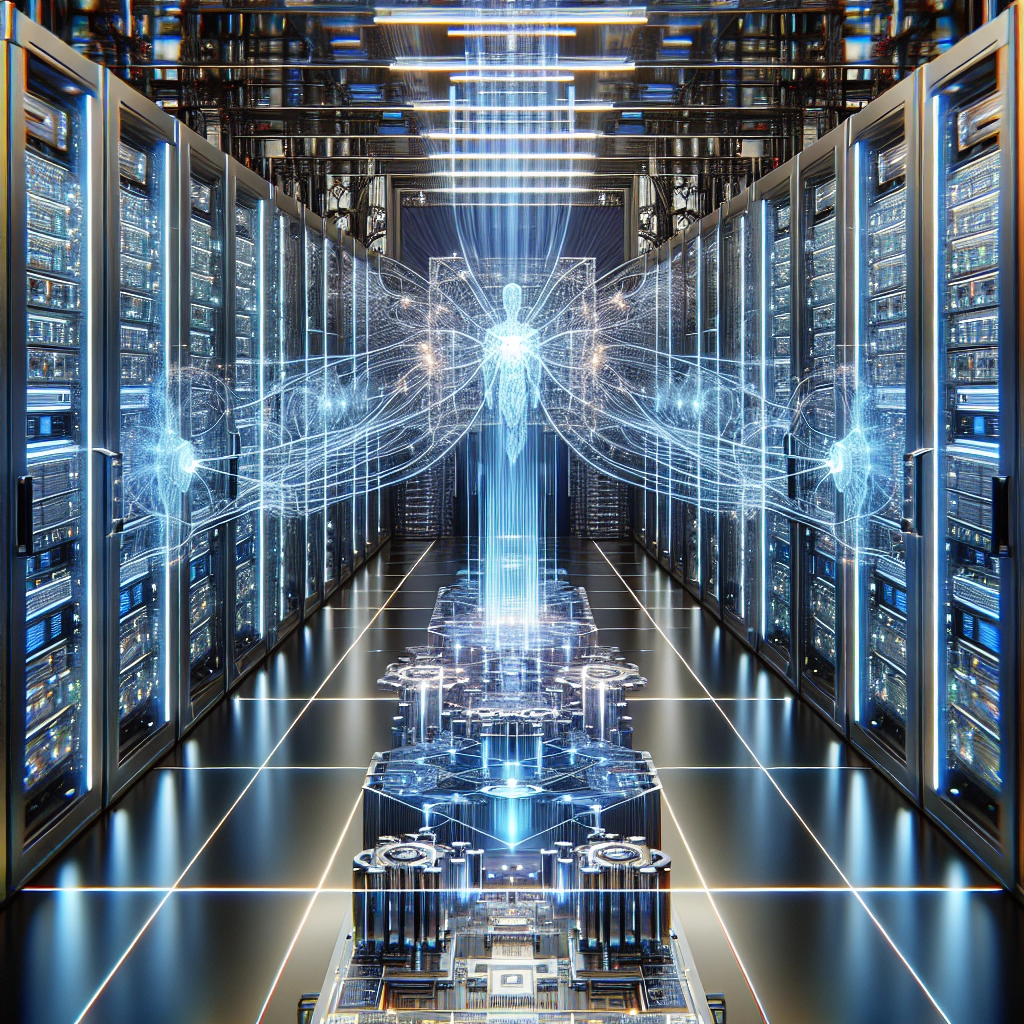Rising demands for graphics processing units (GPUs) are compelling data centers to evolve rapidly in design and functionality. With the surge in Artificial Intelligence (AI) applications, newer data center architectures are being developed, including liquid cooling technologies, modular designs, and the implementation of digital twins to enhance scalability.
For over twenty years, traditional x86 servers have underpinned digital infrastructures. These compact, stackable servers have seen a steady increase in power density, from about 3 kilowatts (kW) in the late 1990s to an average of 10 kW today. Historically, data centers have been able to adjust incrementally to these changes without significant overhauls. However, the burgeoning demands of AI workloads are reshaping this paradigm.
Analysts project that AI applications will constitute approximately 60% of new server deployments within the next year. Unlike conventional server setups, AI systems typically feature multiple central processing units (CPUs), data processing units (DPUs), and support for up to 16 GPUs in a single chassis. This evolution gives rise to powerful "super servers," which, while capable of handling complex AI tasks, require substantially more power and often depend on liquid cooling solutions to operate effectively.
The trend is exemplified by NVIDIA’s rapid GPU advancements. For instance, while racks equipped with the A100 GPUs averaged around 25 kW in 2022, subsequent models have significantly increased these demands. The transition to the H100 saw power requirements rise to nearly 40 kW, followed by the GH200, pushing it to about 72 kW. Anticipated future releases, such as the GB200 and VR200, could require upwards of 240 kW per rack.
This dramatic increase in power needs presents severe challenges for data center designers, who must adapt infrastructure designed for 10 kW to bear much higher loads. The complexity of cooling solutions increases as well, necessitating innovative designs that can accommodate both air and liquid cooling systems. As density rises, the risks of system inefficiency and overheating also escalate, leaving operators with little time to adjust.
To facilitate the transition, the implementation of digital twin technology is gaining traction. This technology creates highly precise virtual models of data centers, simulating parameters like power distribution and thermal dynamics before any physical infrastructure is built. Such models allow for thorough testing of airflow and energy distribution, ultimately reducing deployment risk.
Alongside digital twins, reference designs provided by power and cooling suppliers offer pre-tested configurations tailored for AI systems, which streamline the design process and ensure compatibility. These designs help engineers adhere to local regulations while expediting construction.
Prefabricated modular units are also emerging as a solution for rapid deployment. These units—including integrated power, cooling, and IT systems—arrive ready for installation, functioning as plug-and-play segments. Recent innovations in prefabricated modules cater specifically to GPU clusters, designed to minimize on-site risk and facilitate quicker adjustments to infrastructure as AI technology continues to advance.
As the pace of AI chip innovation accelerates, data centers must anticipate future GPU generations and rapidly adapt their infrastructures. It is imperative for operators to balance technological advancement with practical solutions through digital simulations, modular construction, and effective collaboration with technology partners. The traditional model of general-purpose servers is fading, ushering in an era characterized by the need for high-density AI infrastructures where energy efficiency and thermal management are paramount.
FAQ: Adapting Data Centers for the AI Era
Why are AI servers so power-intensive?
AI servers utilize GPUs and DPUs optimized for parallel processing, which inherently consume more energy than traditional CPUs. Each new GPU generation typically doubles or triples the power needs per rack.
What is the biggest design challenge for next-generation data centers?
Cooling solutions are paramount. Traditional air-cooled systems cannot efficiently manage heat generated by high-density AI racks, necessitating the transition to liquid cooling and hybrid approaches.
How do digital twins assist in AI data center design?
Digital twins provide a simulated environment for engineers to experiment with airflow, energy distribution, and potential failure scenarios prior to actual construction, reducing risks and improving cost-effectiveness.
What are reference designs, and why are they valuable?
Reference designs are standardized templates from manufacturers that detail optimized configurations for power and cooling. They expedite the design process and ensure compatibility with the latest AI hardware.
Are prefabricated modules the future of data center construction?
In the AI sector, prefabricated modules are proving increasingly beneficial, providing pre-tested infrastructure that can be implemented swiftly in response to the fast-changing landscape of GPU technology.
Welcome to DediRock, your trusted partner in high-performance hosting solutions. At DediRock, we specialize in providing dedicated servers, VPS hosting, and cloud services tailored to meet the unique needs of businesses and individuals alike. Our mission is to deliver reliable, scalable, and secure hosting solutions that empower our clients to achieve their digital goals. With a commitment to exceptional customer support, cutting-edge technology, and robust infrastructure, DediRock stands out as a leader in the hosting industry. Join us and experience the difference that dedicated service and unwavering reliability can make for your online presence. Launch our website.

